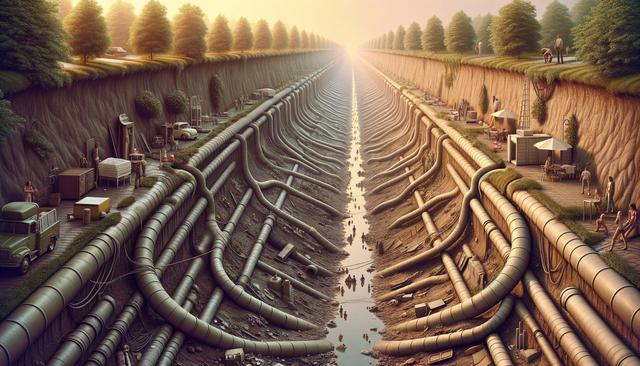What Are Trench Drains?
Trench drains, sometimes referred to as channel drains or linear drains, are surface water management systems designed to quickly collect and direct excess water away from specific areas. These systems are typically long, narrow, and installed flush with the surface, making them ideal for areas where water tends to accumulate. Commonly used in driveways, parking lots, commercial garages, and around pools, trench drains are effective in preventing flooding, erosion, and water damage. Their design includes a trench or channel that is covered with a grate, which allows water to flow into the system while keeping debris out.
Trench drains come in various materials such as concrete, polymer concrete, plastic, and stainless steel. The choice of material often depends on the application and load requirements. For example, heavy-duty applications like airports or industrial zones may require steel trench drains for added strength and durability, whereas residential settings might benefit from lightweight plastic options that are easier to install.
Key Components and Installation Considerations
Understanding the main components of a trench drain system can make installation and maintenance more efficient. These systems generally include:
- The trench or channel body
- A grate or cover
- An outlet for connection to drainage pipes
- End caps and catch basins (optional, but useful for collecting debris)
Proper installation is critical to ensure the trench drain functions effectively. The area must be excavated to fit the drain system, and a solid concrete base is typically poured to stabilize the channel. The system must also be set at the correct slope to allow gravity to move the water toward the outlet. Incorrect installation can lead to pooling, clogging, or structural failure over time, so professional assistance is often recommended for more complex applications.
Applications in Residential and Commercial Settings
Trench drains are versatile and serve a wide range of purposes in both residential and commercial environments. In residential settings, they are frequently used to prevent water accumulation around the foundation, patios, driveways, and pool decks. This not only protects the structural integrity of the property but also enhances safety by reducing slippery surfaces.
In commercial or industrial spaces, trench drains are crucial for managing large volumes of water. They are commonly found in:
- Loading docks and warehouses
- Parking structures
- Manufacturing plants
- Public walkways and plazas
Each of these locations has unique requirements, such as load-bearing capacity and chemical resistance, which influence the choice of trench drain system. Selecting the appropriate system ensures long-term performance and compliance with local regulations and safety standards.
Maintenance Tips for Long-Term Performance
Like any drainage solution, trench drains require regular maintenance to function properly over time. Neglecting upkeep can result in clogs, unpleasant odors, and even water damage. Fortunately, routine maintenance is relatively straightforward. Here are some key tips:
- Inspect grates regularly for signs of damage or rust
- Remove debris such as leaves, dirt, and trash from the surface and inside the channel
- Flush the system periodically with a hose or pressure washer
- Check for blockages at the outlet and clean as needed
For trench drains installed in areas with high traffic or heavy usage, consider scheduling professional inspections annually. This helps identify potential issues early, including structural wear or improper slope, which can be corrected before they become serious problems.
Choosing the Right Trench Drain for Your Needs
Selecting the right trench drain depends on several factors, including location, load requirements, and environmental conditions. For residential applications, ease of installation and aesthetic considerations might be top priorities. Homeowners often look for systems that blend seamlessly with landscaping and require minimal upkeep.
In contrast, commercial and industrial installations often demand trench drains that meet specific performance standards. These may include:
- High load-bearing capacity for vehicular traffic
- Resistance to chemicals or oils
- Compatibility with existing drainage infrastructure
- Modular design for ease of expansion or reconfiguration
In all cases, it’s important to consult with professionals or refer to manufacturer specifications to ensure the chosen system meets the needs of the project. Proper planning and selection can significantly enhance the effectiveness and longevity of the trench drain solution.
Conclusion: An Effective Solution for Water Management
Trench drains offer a practical and reliable method for managing surface water in a variety of environments. Whether you’re a homeowner looking to protect your property or a facility manager seeking a durable solution for high-traffic areas, trench drains provide flexibility, efficiency, and long-term value. By understanding their structure, applications, and maintenance requirements, you can make informed decisions and ensure your drainage system performs optimally for years to come.




Leave a Reply